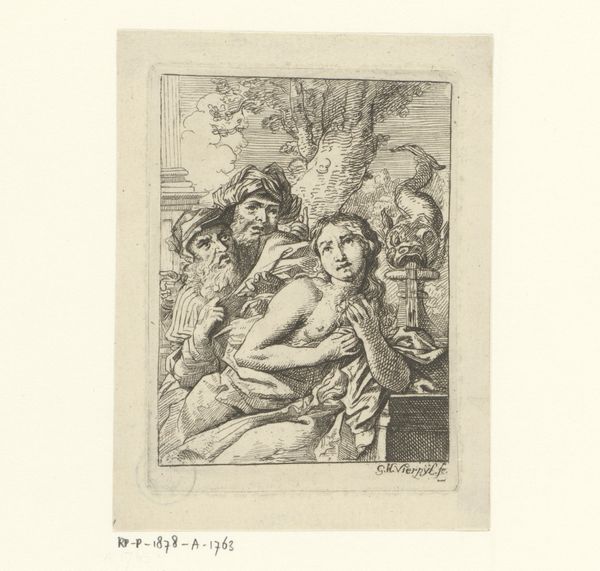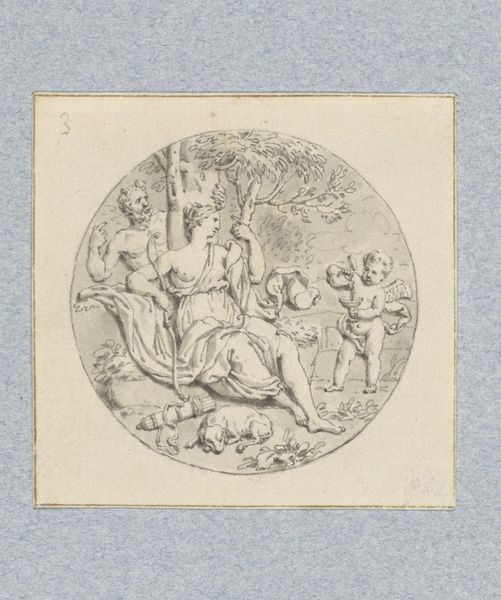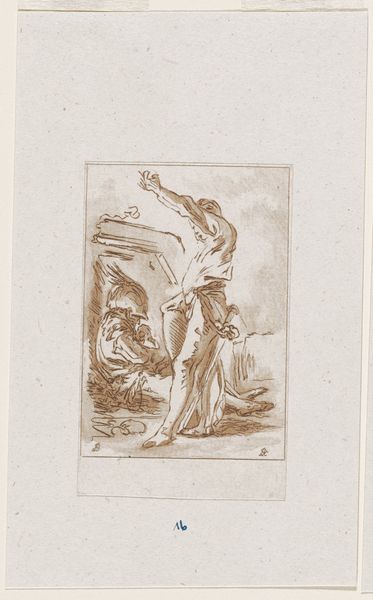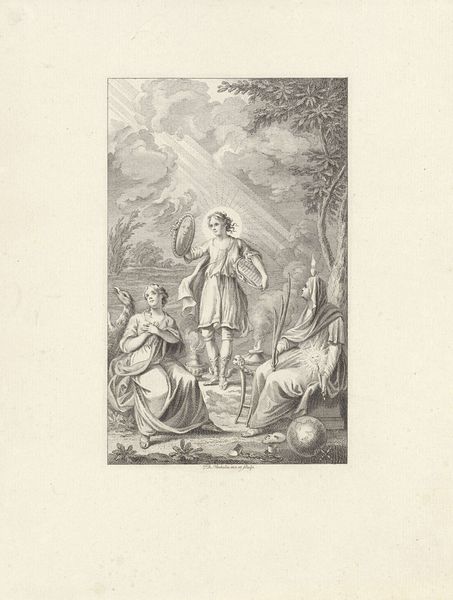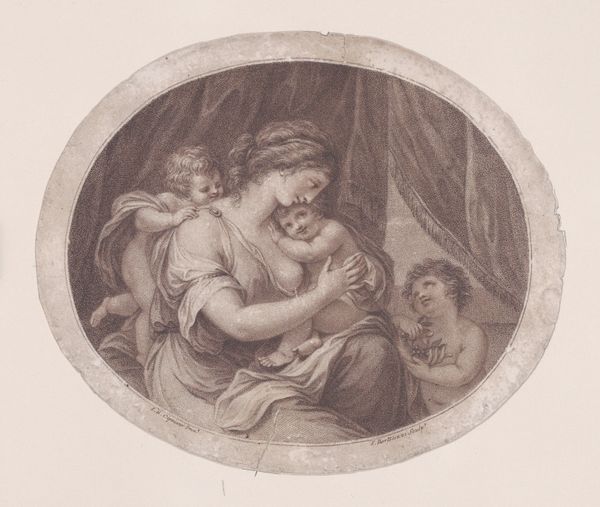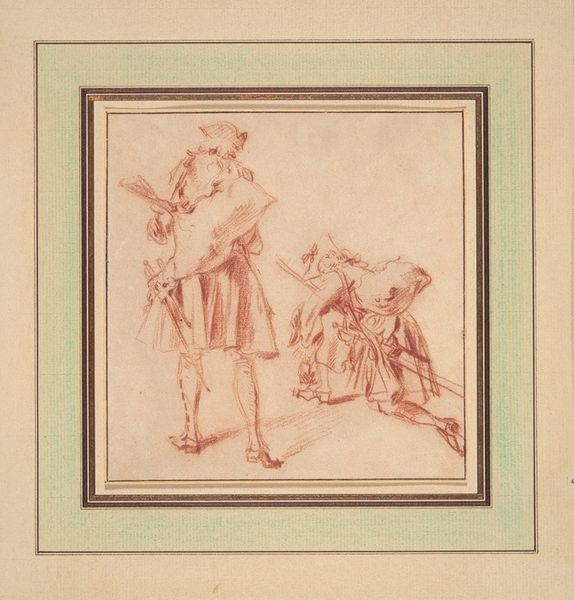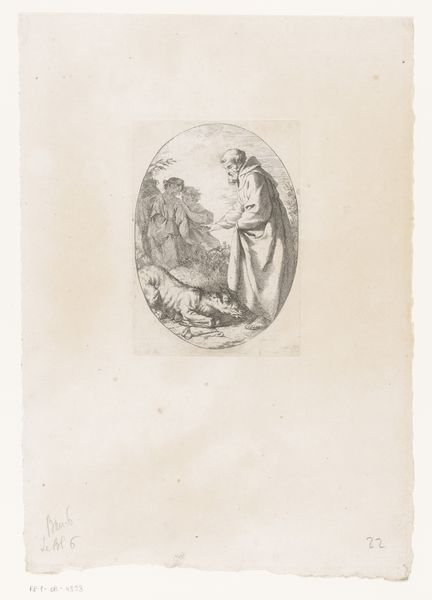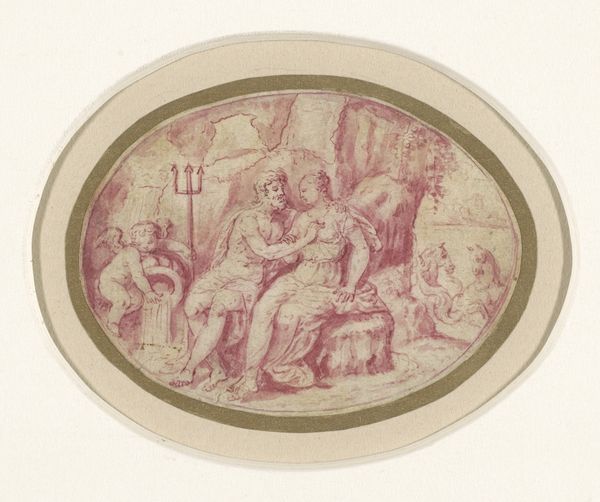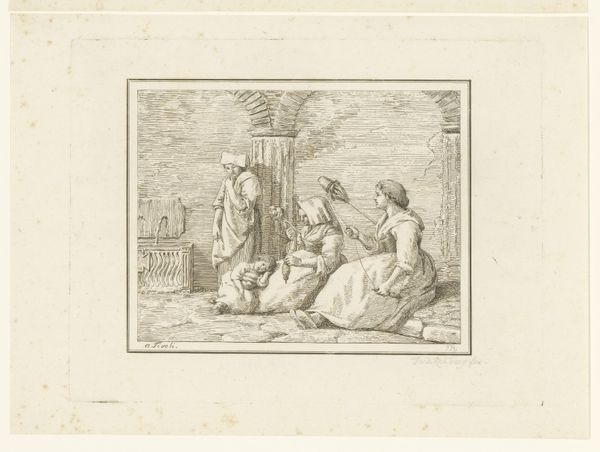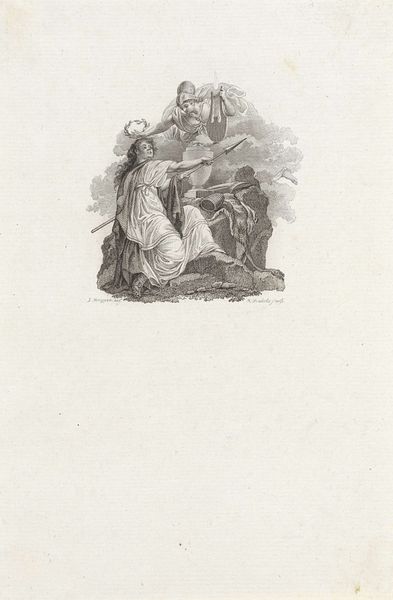
Mythologische voorstelling van Paris die Venus de appel (?) overhandigt 1703 - 1775
0:00
0:00
louisfabritiusdubourg
Rijksmuseum
drawing, engraving
#
drawing
#
allegory
#
baroque
#
old engraving style
#
traditional media
#
figuration
#
line
#
history-painting
#
engraving
Dimensions: height 83 mm, width 83 mm
Copyright: Rijks Museum: Open Domain
Curator: At the Rijksmuseum we have "Mythological Scene with Paris Awarding the Apple to Venus," a drawing or engraving made sometime between 1703 and 1775 by Louis Fabritius Dubourg. What's your immediate take on this one? Editor: It feels... distant. Cold almost. Even with the softness of the rendering, it lacks a certain intimacy. All these grand figures captured in such muted tones, I wonder about the socio-political subtext and who its patron was intended to be. Curator: That chill is interesting! It makes me wonder about Dubourg's own emotional distance from these archetypes. Is he revering them or simply recording them, like a dutiful scribe? The almost academic lines are pretty emotionally flat, which I guess gives it that removed feel. Editor: Exactly! And it makes me question the role of Venus within patriarchal structures. Her beauty is being judged, objectified. The apple becomes a symbol of discord, of female rivalry, dictated by the male gaze represented here by Paris and his decision. Curator: Hmm, discord curated and sanctioned! Now that you say it, this seemingly idyllic scene really takes on a sharper, slightly sinister edge. He's wearing armour, about to start the Trojan war! All on the beauty of this one woman. This also puts the cupids floating over the women in another, uncomfortable perspective. Editor: The cupid is also another layer of that same social pressure for womanhood, the romantic expectation for Venus to get a husband and get courted because that would be the highest achievement for her. But also to be eternally youthful! Being a beautiful desirable lady for the eternity is something many people fight against. Curator: Yes, she seems trapped inside this moment. You know, for a long time I saw engravings like this as pure decoration, escapism... now I see the artist is creating or unintentionally representing those power dynamics that still reverberate today. Editor: It really makes you question those supposed ideals, doesn’t it? It unveils the gendered violence hidden beneath supposedly neutral and harmless beautiful art. And that’s what makes engaging with art from the past such a vital act of resistance. Curator: It truly does shift our thinking about our current struggles. I appreciate how this sheds new light on familiar stories and maybe also how to escape some of them!
Comments
No comments
Be the first to comment and join the conversation on the ultimate creative platform.

